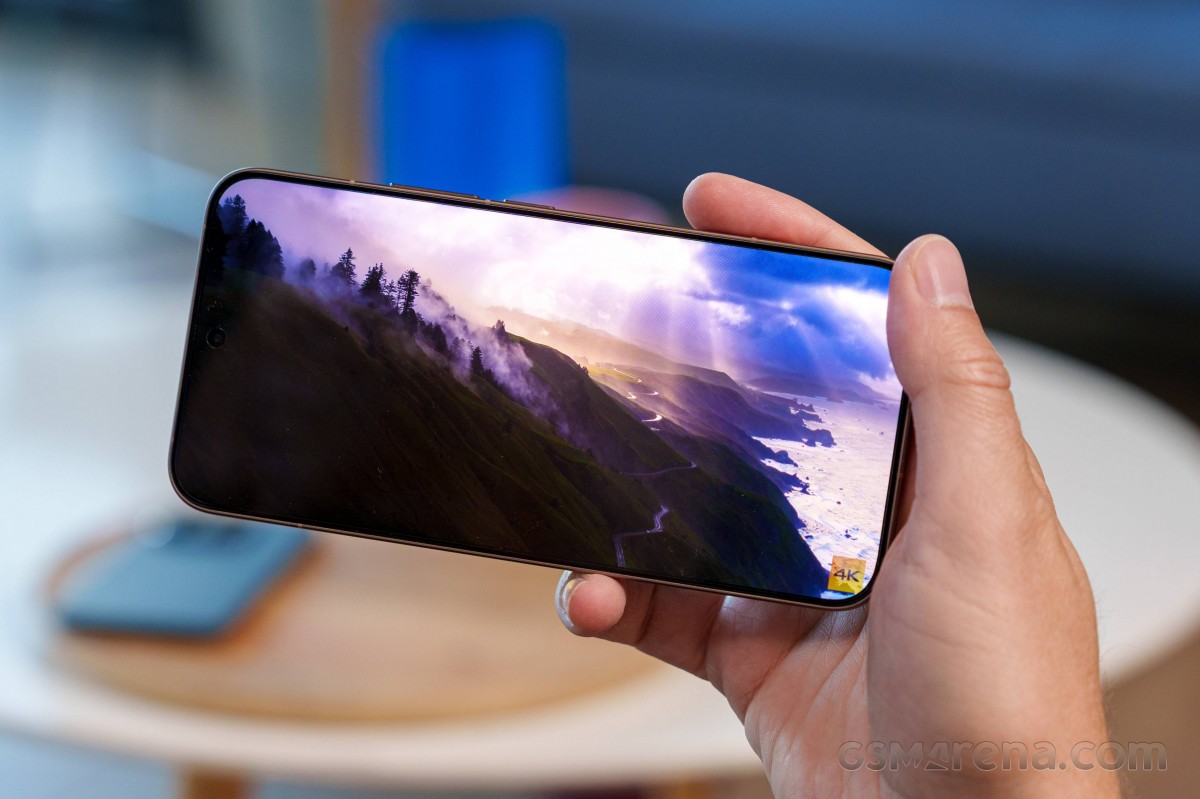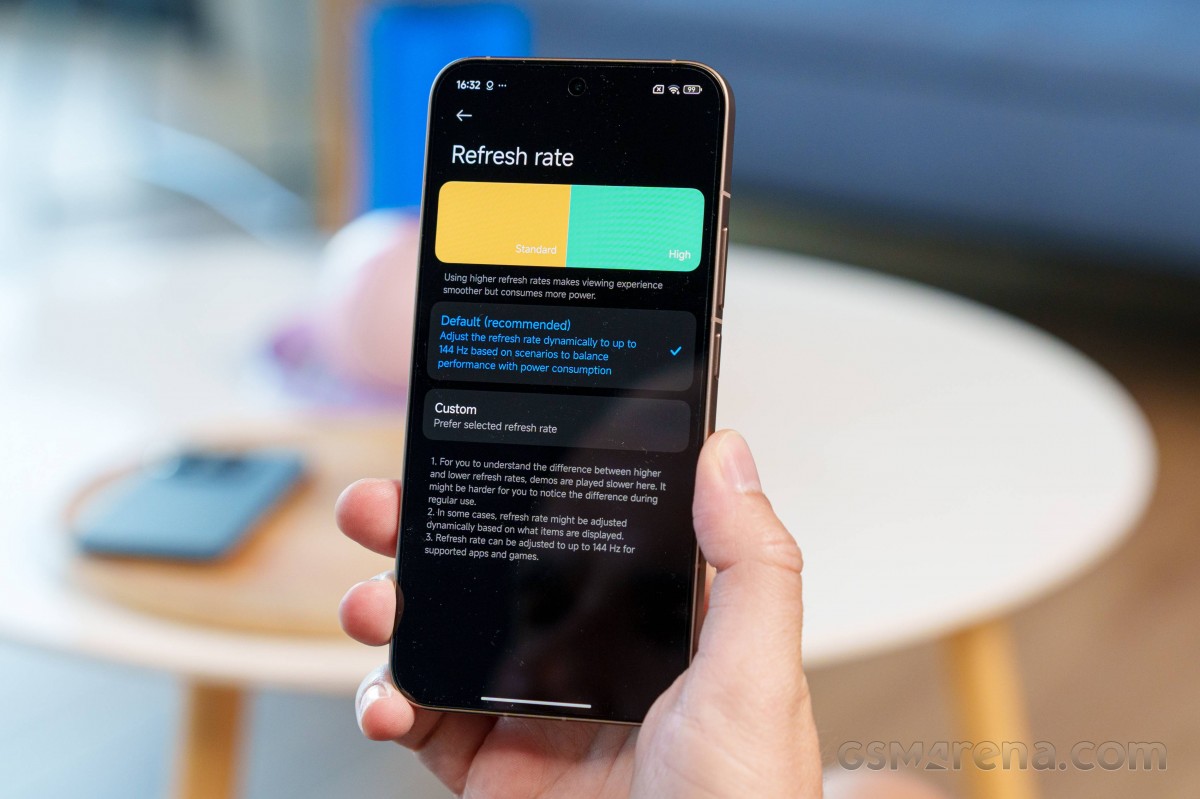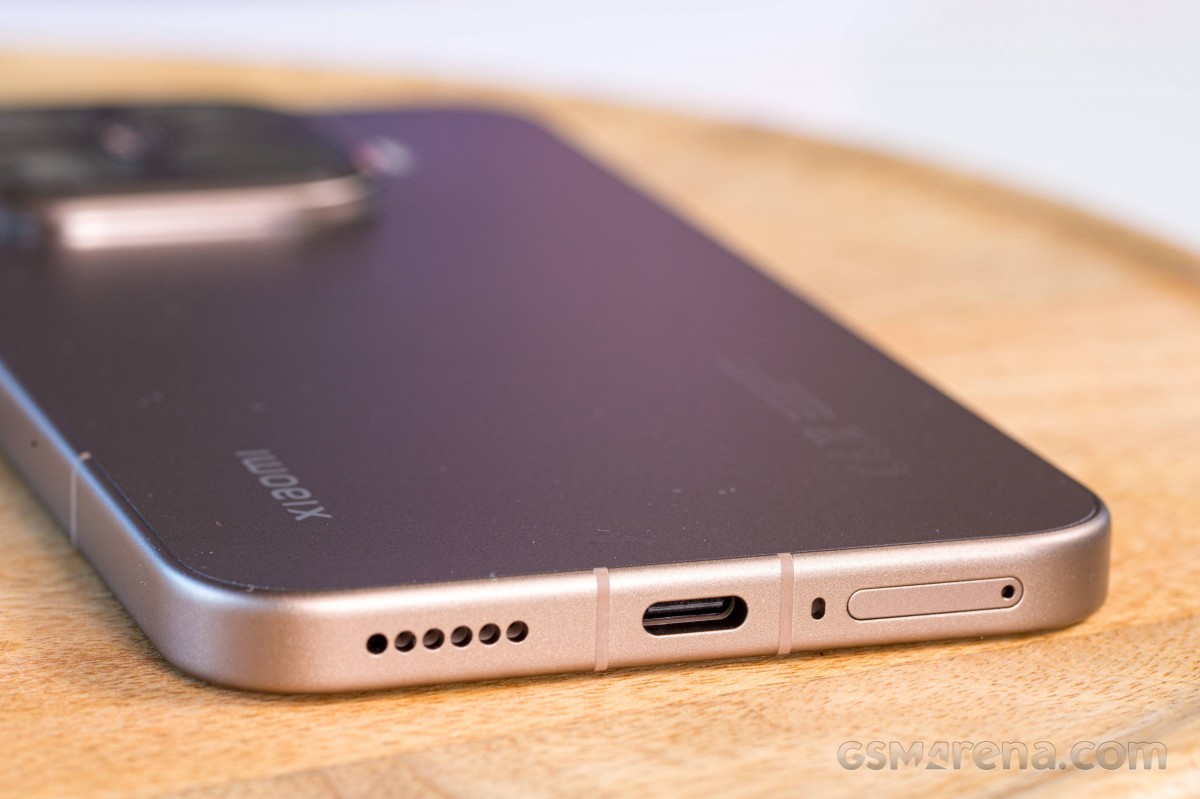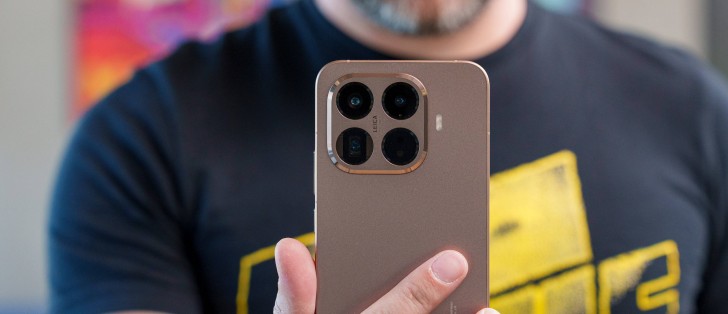Display
The Xiaomi 15T Pro brings a large 6.83-inch AMOLED screen with 1280 x 2772 pixels, 68B colors, and 144Hz refresh rate. Other niceties include 480Hz touch sampling, 3840Hz PWM dimming, and support for Dolby Vision and HDR10+ content.
The screen is protected by a Gorilla Glass 7i sheet.

The 15T Pro has a larger display than the 14T Pro – 6.83″ vs. 6.67″, but the peak brightness has been lowered – 3,200 nits vs. 4,000 nits.
We measured 599 nits of maximum manual brightness without the sunlight boost option (also known as extra brightness). With the boost turned on – the maximum manual brightness rose to 826 nits – a solid number.
The maximum automatic brightness is alright at 1,419 nits, an upgrade over the 14T Pro. It can go beyond 3000 nits with a smaller part of the display lit up.
Refresh rate
Xiaomi 15T Pro offers two modes for its display – Automatic and Custom (60Hz or up to 144Hz).
Automatic and Custom 144Hz do pretty much the same – 120Hz is used for the system UI, 60Hz for idle screen, and 30Hz for always-on display.

Custom 144Hz always aims to use the maximum refresh rate available – read 120Hz – including apps such as Maps, YouTube, Netflix, Chrome, etc. If they run on 60Hz or 90Hz, you may want to try and switch their respective High Refresh Rate toggle from the advanced per app settings. 144Hz was used only a handful of times on a few benchmarks.
Auto usually uses 60Hz for apps such as Netflix, YouTube, Maps, but still aims for the maximum in games and benchmarks.
Finally, Custom 60Hz fixes the refresh rate at 60Hz for everything, except the AOD option that dials down to 30Hz.
HDR
The Xiaomi 15T Pro’s display is certified for Dolby Vision and HDR10+ support and is successfully recognized as supporting these streaming standards across all popular video apps.
Battery life
The Xiaomi 15T Pro is powered by a 5,500mAh battery, a 10% increase over the 14T Pro. It scored a significantly better Active Use Score of 16:24 hours. It did better across all of our tests, with notable improvements when it comes to video streaming.
The 15T Pro beat most of the popular devices we’ve tested from the same price bracket, so you can rest assured – this phone will last you through your intense daily routine and then some.
Charging speed
The new Xiaomi 15T Pro supports wired charging at up to 90W using Xiaomi’s proprietary charger, which is a notch below last year’s 120W charging support. The 50W wireless charging remains, but it’s once again tied to Xiaomi’s proprietary wireless chargers. The slight charging speed decrease was perhaps the sacrifice needed to get the 500 mAh extra battery capacity.
Still, even with the downgrade, the 15T Pro has a very competitive charging solution. In fact, the 15T Pro outpaces the Xiaomi 15 Ultra even though they have roughly the same battery and charging hardware.
The 15T Pro got to 50% in just 15 minutes, while a full charge took only 36 minutes from 0%.
Xiaomi has included a couple of charging options for extending the battery life in the long term. You can disable the fastest charging mode altogether, or limit the charging to 80%. There’s also a toggle that enables smart charging, which learns from your behavior and adapts the charging, so the battery doesn’t stay at full charge overnight.
Speakers
The Xiaomi 15T Pro has a hybrid stereo speaker setup. There is a dedicated bottom speaker and the earpiece joins it when needed.

The two speakers are well balanced and sound great. They support Dolby Atmos and the enhancement is turned on by default. With or without Dolby Atmos, the difference in loudness and overall quality is negligible. Our test carried with Dolby Atmos turned ON.
The Xiaomi 15T Pro scored a Very Good mark for loudness test. The audio quality is very good, too, with well-presented high range, excellent vocals, and above average thump.
Use the Playback controls to listen to the phone sample recordings (best use headphones). We measure the average loudness of the speakers in LUFS. A lower absolute value means a louder sound. A look at the frequency response chart will tell you how far off the ideal “0db” flat line is the reproduction of the bass, treble, and mid frequencies. You can add more phones to compare how they differ. The scores and ratings are not comparable with our older loudspeaker test. Learn more about how we test here.
